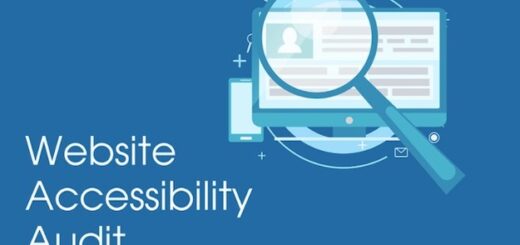Improving your team’s data literacy can seem daunting, but it doesn’t have to be. By taking a tailored approach and providing employees with the right resources, you can help them better understand and use data.
Everyone in the company benefits from increased data literacy. Data is becoming more and more important, and those who are data literate will be able to make better decisions using the data that is available to them. This includes those in marketing, sales, operations, finance, and human resources.

What Is Data Literacy?
Data literacy is being able to read, write, discuss, understand, and act on data. Teams need to be data literate because they need to be able to understand and use the data that is available to them to make better decisions.
Technical data literacy is about understanding the technical aspects of data. This includes understanding data sources, data formats, and how to manipulate and analyze data.
Conceptual data literacy is about understanding the concepts behind data. This includes understanding what data is, how it can be used, and the different data types.
Understanding data sources, data types, and how to properly analyze data is essential for everyone, not just those in data science or analytics. Lack of data literacy is a problem for companies because they cannot use their data effectively.
This lack of literacy can lead to bad choices, missed opportunities, and even the closure of businesses.
Why Is Data Literacy So Important?
All teams need to be data literate for a company to be successful, and they need to understand the available data to navigate project development.
Teams need to be able to use data to create products and services that meet customer needs while using data to improve processes and operations.
Data literacy helps teams work together better, and data literate teams are more likely to be successful.
Tips To Improve Your Team’s Data Literacy
There are a few things to remember when improving data literacy within your team. First, it’s essential to understand what data literacy means for each employee.
Not everyone needs to know how to read and analyze data sets – instead, focus on giving employees the knowledge they need to perform their best work.
This could include resources like tutorials, articles, or even just a basic understanding of using Excel or Google Sheets.
Here are several ways to improve your team’s data literacy:
Create a data literacy plan. This plan should include the following:
# The types of data that your team is interested in
# The skills that your team needs to be influential data consumers
# The resources that your team can use to improve their data literacy
Overcome any barriers preventing them from becoming effective data consumers. Some of these barriers might include the following:
# Lack of data literacy skills
# Lack of access to data
# Lack of time to analyze data
If your team is struggling with these barriers, there are ways to overcome them:
# Provide training or resources to help them learn
# Provide access to data
# Break down the data into more manageable pieces
By following these tips, you can help your team become more data literate and create plans based on the available data.
What Systems and Tools Help Develop Data Literacy?
Several systems and tools can help develop data literacy. The following are some of the most common:
Data visualizations help develop data literacy by providing a way to see data in a different light. They can help make data more relatable and easier to understand. Fun examples of different data visualization types.
Databases allow employees to explore and analyze data sets on their own. This process can help them develop the skills needed to be influential data consumers.
Data mining allows employees to find patterns and insights in data sets. This procedure can help them understand how data works and how to use it.
Text analytics helps employees understand the meaning of text data and how to use it.
Learning algorithms help employees learn how to use machine learning to develop content.
These systems and tools can help employees develop data literacy skills and become more effective data consumers.
It’s essential to provide employees with access to data. This access could mean permitting them to view certain data sets or providing them with tools to access data quickly. By making data easily accessible, employees can incorporate it into their work more efficiently.
Developing data literacy within teams can be difficult, but companies need to succeed. By understanding what data literacy means for each employee and providing the right resources and training, you can help your team become more data literate.
How To Measure Success
Measuring the success of data literacy can be difficult. However, there are some things that you can look at to help you measure success:
The number of data-literate teams that can explore options based on data.
The accuracy of the decisions made by teams and the amount of data literacy training provided.
How data literacy has helped the team work together better.
By looking at these factors, you can get a good idea of how successful data literacy has been for your team.
What Are Important Data Literacy Skills?
Critical thinking is an essential skill for data literacy. This skill is needed to make sense of data and understand how to use it to organize projects.
Recognizing when data is misused or making a case is another skill needed for data literacy.
Understanding data visualizations like charts and infographics are also important.
Statistical analysis is defined as understanding data results and using that information to make choices. This analysis is an integral part of data literacy because it allows teams to understand the data they are using.
Teamwork skills are also essential for data literacy. When teams are data literate, they can share information and ideas more efficiently.
Data interpretation is the ability to understand the meaning of data. This skill is vital for teams because it allows them to understand what the data is saying and how to use it.
Your team can be more effective data consumers and make informed choices based on the available data by having these skills.
Resources To Help Improve Data Literacy
There are several resources available to help improve data literacy. The following are some of the most common:
# Books
# Articles
# Online courses
# Webinars
# Workshops
# Conferences
# Vizlib’s Data Literacy Playbook
How To Develop a Data Literacy Program
The first step is to locate data-literate individuals who can assume leadership roles in the data literacy effort.
Once you have found these individuals, you can begin to develop a program that will help your team become more data literate.
The program should include:
# A training curriculum that covers the essential skills needed for data literacy
# Resources that team members can use to improve their data literacy skills
# Opportunities for team members to practice their data literacy skills
# A system for measuring the success of the data literacy program
Understanding cultural issues should be part of developing a data literacy program. Different cultures have different attitudes towards data and information.
Feedback from teams helps gauge the success of the data literacy program and make necessary adjustments.
By taking these things into account, you can develop a data literacy program that will be successful for your team.
How To Tailor Data Literacy for Employees
Many employees only require a basic understanding of data literacy concepts.
Some employees, however, may require more in-depth exploration of data literacy. It is crucial to determine how much each employee needs to know.
When tailoring data literacy for employees, consider the following:
# The level of understanding needed
# The type of data used
# The purpose of the data
# The team’s culture
# The team’s skillset
Once you have determined the level of data literacy each employee needs to know, you can tailor the training accordingly.
You may also need to adjust the program depending on the team’s needs.
Data Literacy and Your Business
Data literacy is important for businesses because it allows them to increase efficiency and improve the quality of work.
Businesses can use data to:
# Understand their customers
# Analyze their competition
# Track their performance
# Monitor the market
# Predict trends
By understanding and using data, businesses can improve performance to help them be more successful.
With the right tools and training, your team can become more data-literate and see improved results in their work.
It’s essential to foster a culture of data literacy within your team. This culture means encouraging employees to ask questions and experiment with data.
Employees will be more comfortable learning about and using data in their work by providing a supportive environment.
With the correct approach, you can help your team improve their data literacy and see better results in their work. By providing employees with access to data, tools, and training, you can help them make informed decisions and see real improvements in their productivity.




